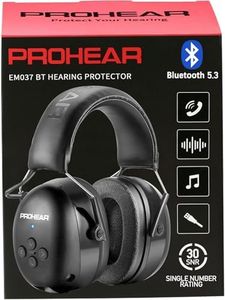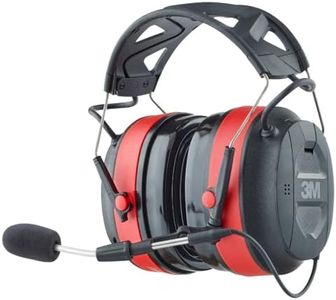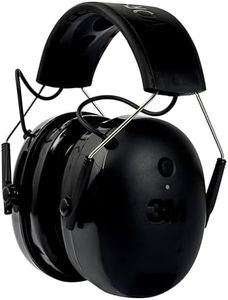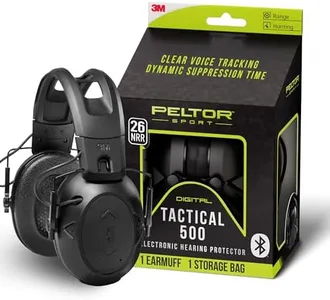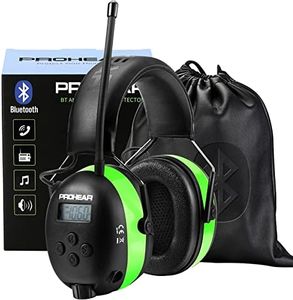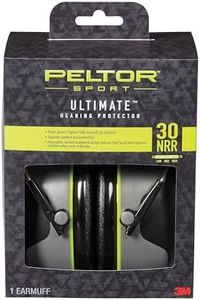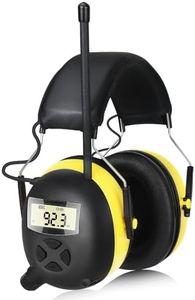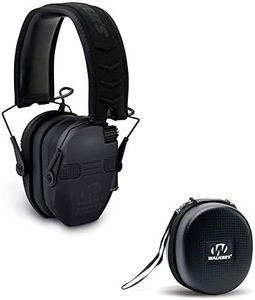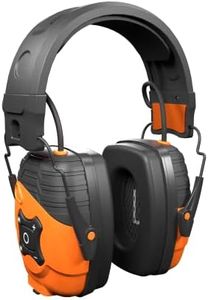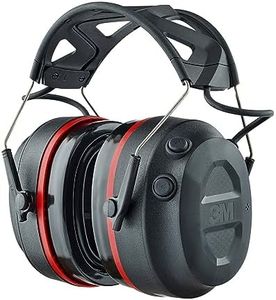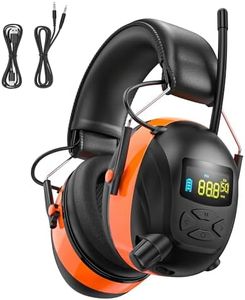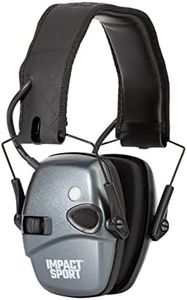We Use CookiesWe use cookies to enhance the security, performance,
functionality and for analytical and promotional activities. By continuing to browse this site you
are agreeing to our privacy policy
10 Best Ear Protection Radios
From leading brands and best sellers available on the web.Buying Guide for the Best Ear Protection Radios
When choosing an ear protection radio, you're looking for something that not only keeps your ears safe from loud noises but also lets you enjoy music, news, or talk radio. These are popular among people working with loud machinery, on construction sites, or even during lawn and yard work. The best ear protection radio for you will balance comfort, sound protection level, audio quality, and all the extra features that might make your workday or hobby more enjoyable. Think of your environment and personal preferences; are you after ultimate hearing safety, the best radio reception, or extra connectivity such as Bluetooth? Understanding your own priorities will make the selection process much smoother.Noise Reduction Rating (NRR)Noise Reduction Rating, or NRR, represents how well the ear protection reduces noise. The higher the NRR, the more sound is blocked out. NRR is especially important if you're working around very loud machinery or environments because it determines how much your hearing will be protected. Ratings usually range from around 20 dB up to around 30 dB. Lower NRR (below 22 dB) is suitable for lighter tasks with moderate noise, mid-range (23-27 dB) works well for lawn mowing or small power tools, and higher NRR (28 dB and above) is best for heavy-duty industrial settings. Look at your typical noise exposure and pick an NRR that matches the demands of your environment.
Radio Reception and SourcesThis refers to the types of radio and media sources your ear protection headphones can access. Most models offer FM, and some also provide AM reception or digital stations. Reception strength is important if you are in a rural area or near interference, and having presets helps with convenience. Some headphones might also include auxiliary input or Bluetooth to let you connect to your own music devices. If you mainly rely on radio, check that reception meets your needs, and if you want to use your own playlists or podcasts, consider models with Bluetooth or audio input options.
Comfort and FitComfort relates to how the ear protection radio feels over long periods of use. Headband padding, ear cushion size, and overall adjustability all play a part here. Heavy or poorly padded models may cause discomfort, especially during full shifts. Lightweight designs with soft, replaceable cushions help if you use them daily. If you’ll wear them for many hours, prioritize comfort over minor feature differences.
Battery Life and Power OptionsBattery life determines how long you can use the radio before needing a recharge or new batteries. Some run on standard AA or AAA batteries, others have built-in rechargeable batteries. Long battery life is useful for extended use, while rechargeable models can be more convenient and environmentally friendly if you have regular access to charging. Think about how long you work and how easily you can recharge or replace batteries—this will help guide your decision.
Durability and Build QualityDurability indicates how well the device stands up to drops, weather, sweat, and general wear and tear. Some ear protection radios are specifically built for rugged environments, with reinforced parts and water or dust resistance. Others are more suited to lighter tasks. If you'll be working outdoors or in challenging conditions, sturdier build and weather resistance are important features to look for.
Controls and AccessibilityThe ease of use of buttons, knobs, and other controls is important, especially if you’re wearing gloves or need to make adjustments quickly. Simple, large controls are great for quick changes, while digital displays can help with tuning but might be harder to use with gloves. Consider where and how you'll be using the device, and pick a model with controls that suit your typical working situation.
